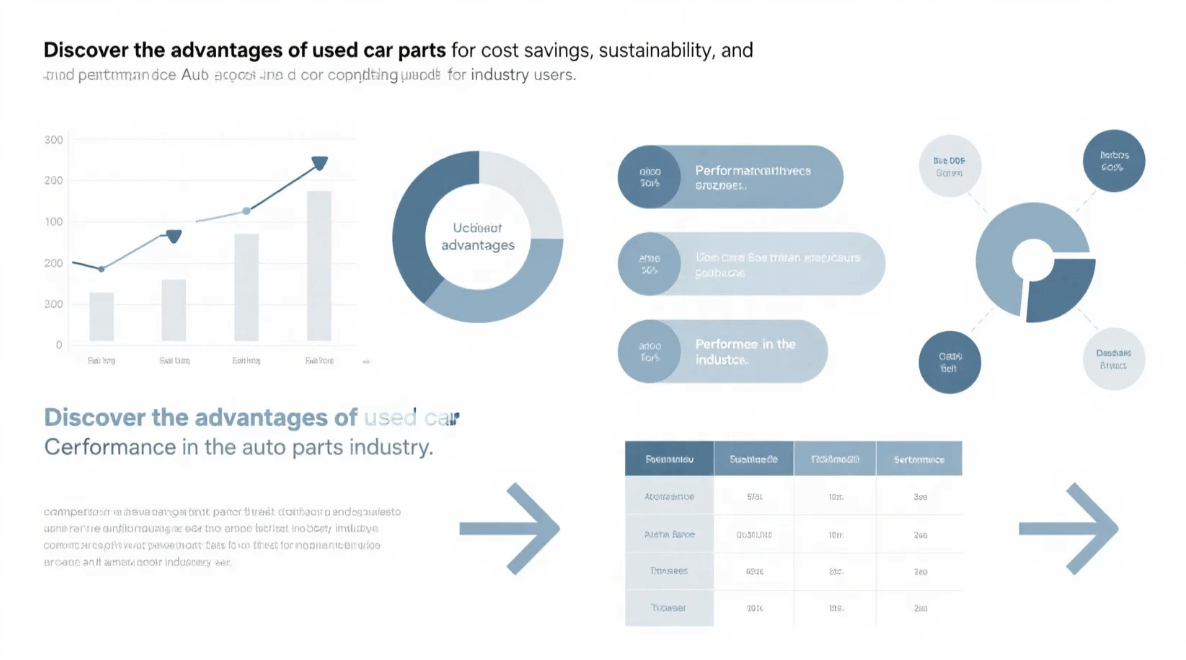
Introduction: Why Used Car Parts Are Gaining Momentum
In today’s automotive world, the demand for cost-effective and sustainable alternatives has given rise to the popularity of used car parts. Whether you are an individual consumer or an auto repair business, integrating used components into your operations can offer financial and environmental benefits. This article explores the value, applications, and evolving trends of used car parts.
What Are Used Car Parts?
Used car parts are components salvaged from vehicles that are no longer in service but still possess functional integrity. These parts may originate from:
- Accident-damaged vehicles
- Retired fleet cars
- Insurance write-offs
- Trade-in or end-of-life vehicles
Despite their previous use, many of these parts maintain OEM quality and are subjected to rigorous testing before resale.
Economic Benefits of Used Car Parts

1. Cost Savings for Consumers and Businesses
Used parts are significantly less expensive than new ones. This allows garages and vehicle owners to reduce repair costs without compromising on quality.
2. Lower Insurance Claim Settlements
Insurance providers often recommend used parts for repairs, reducing claim payouts while maintaining repair standards.
3. Competitive Edge for Mechanics
By offering more affordable repair options, workshops can attract cost-conscious customers and improve service flexibility.
Environmental Advantages of Used Auto Components
1. Waste Reduction
Reusing parts keeps functional items out of landfills, contributing to a circular economy.
2. Energy Conservation
Producing new parts consumes significant energy and resources. Choosing used car parts minimizes that environmental footprint.
3. Reduced Demand for Raw Materials
Mining and manufacturing require massive inputs. Used parts mitigate the need for new resource extraction.
Common Types of Used Car Parts Available
- Engines and Transmissions
- Alternators and Starters
- Suspension Systems
- Doors, Bumpers, and Panels
- Infotainment Systems
- Lights and Mirrors
These parts are typically refurbished, tested, and certified before being sold.
How to Ensure Quality and Safety
1. Work with Certified Suppliers
Ensure the parts come with warranty or grading standards. Reputable suppliers usually follow industry benchmarks.
2. Ask for History Reports
Many vendors provide origin data, usage duration, and condition grading.
3. Request Testing Documentation
Especially for safety-related components such as brakes and airbags.
Integration in Automotive Businesses
Many garages and body shops now maintain inventories of used car parts to meet increasing demand. Integration into daily workflows improves profitability and customer satisfaction.
Online Marketplaces and Logistics Support
Digital transformation has expanded access to used auto parts. Platforms now allow:
- Real-time inventory checks
- Vehicle-part matching systems
- Shipping integration
- Secure payments and dispute resolution
This makes sourcing parts across borders easier than ever before.
Challenges and Misconceptions
Misconception: Used Parts Are Low Quality
Fact: Certified parts undergo strict testing and may perform as well as new parts.
Challenge: Compatibility
Solution: Advanced databases and VIN-matching tools reduce errors in fitment.
Misconception: No Warranty Offered
Fact: Many vendors provide limited or extended warranties for peace of mind.
The Future of Used Car Parts in the Auto Industry
The global shift toward sustainable practices is making used car parts more mainstream. With increasing OEM collaboration, improved technology for diagnostics and tracking, and growing customer trust, this sector is set to expand.
Conclusion: Embracing a Smarter Approach
Used car parts represent a powerful intersection of savings, sustainability, and operational efficiency. For those in the auto parts industry, they provide a competitive edge in both pricing and environmental responsibility.
FAQs
1. Are used car parts reliable for long-term use?
Yes, when sourced from reputable suppliers and properly maintained.
2. How much can I save using used parts?
Savings typically range from 30% to 70% compared to new OEM components.
3. Can I return a used part if it doesn’t fit?
Most certified suppliers offer return policies or exchange options.
4. Are electrical parts like ECUs safe to buy used?
Yes, provided they are tested and reprogrammed if necessary.
5. Where can I find used car parts online?
Trusted platforms include OEM-approved resellers, salvage yard networks, and specialized eCommerce marketplaces.


